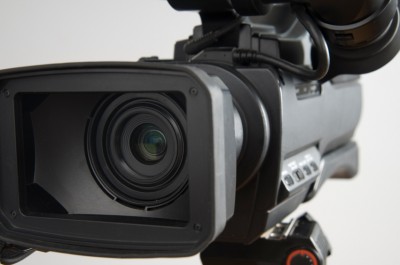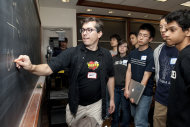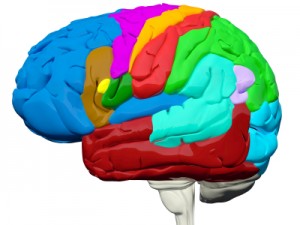First Total Lunar Eclipse of 2014: The Complete Skywatcher’s Guide
Editor’s Update for 6 am ET, April 15: The peak of the first total lunar eclipse of 2014 has ended. For our latest story and the amazing![]() photos of the lunar eclipse, read: Under a Blood Moon: 1st Total Lunar Eclipse or 2014 Wows Stargazers: Photos
photos of the lunar eclipse, read: Under a Blood Moon: 1st Total Lunar Eclipse or 2014 Wows Stargazers: Photos
No enthusiastic skywatcher misses a total eclipse of the moon, and if weather permits tonight, neither should you.
 The phases of the April 14-15 total lunar eclipse are shown with GMT timestamps in this NASA image from a video guide. The total lunar eclipse will affect two NASA spacecraft orbiting the moon since theyrely on
The phases of the April 14-15 total lunar eclipse are shown with GMT timestamps in this NASA image from a video guide. The total lunar eclipse will affect two NASA spacecraft orbiting the moon since theyrely onCredit: NASA
The spectacle is often more beautiful and interesting than one would think. During the time that the moon is entering into and later emerging from out of the Earth’s shadow, secondary phenomena may be overlooked. You can alsowatch the eclipse live on Space.com, courtesy of NASA, the Slooh community telescope and theVirtual![]() Telescope Project.
Telescope Project.
Observers that know what to look for have a better chance of seeing the stunning eclipse, weather permitting. This first total lunar eclipse of 2014 is set to begin tonight (April 14) into the wee hours of Tuesday morning (April 15). The lunar eclipse is set to begin at about 2 a.m. EDT (0600 GMT), and it should last about 3.5 hours. The eclipse should be visible, weather permitting, through most of North America and part of South America. [Total Lunar Eclipse of April 15: Visibility Maps (Gallery)]
Here is Space.com’s full guide for what to expect during all stages of the eclipse:
Credit: By Karl Tate, Infographics Artist
Stage 1 @ 12:53 a.m. EDT: moon enters penumbra — The shadow cone of Earth has two parts: a dark, inner umbra, surrounding by a lighter penumbra. The penumbra is the pale outer portion of Earth’s shadow. Although the eclipse begins officially at this moment, this is in essence an academic event. You won’t see anything unusual happening to the moon — at least not just yet.
Earth’s penumbral shadow is so faint that it remains invisible until the moon is deeply immersed in it. We must wait until the penumbra has reached roughly 70 percent across the moon’s disk. For about the next 45 minutes the full moon will continue to appear to shine normally although with each passing minute it is progressing ever deeper into Earth’s outer shadow.
Stage 2 @ 1:39 a.m. EDT: Penumbral shadow begins to appear — Now the moon has progressed far enough into the penumbra so that the shadow should be evident on its disk. Start looking for a very subtle light shading to appear on the moon’s left portion. This will become increasingly more and more evident as the minutes pass; the shading appearing to spread and deepen. Just before the moon begins to enter Earth’s dark umbral shadow the penumbra should appear as an obvious smudge or tarnishing of the moon’s left portion.
Stage 3 @ 1:58 a.m. EDT: Moon enters umbra — The moon now crosses into Earth’s dark central shadow, called the umbra. A small dark scallop will begin to appear on the moon’s left-hand (eastern) limb. The partial phases of the eclipse begins, the pace quickens and the change is dramatic. The umbra is much darker than the penumbra and fairly sharp-edged.
As the minutes pass, the dark shadow appears to slowly creep across the moon’s face. At first, the moon’s limb may seem to vanish completely inside of the umbra, but much later, as it moves in deeper you’ll probably notice it glowing dimly orange, red or brown. Notice also that the edge of Earth’s shadow projected on the moon is curved. Here is visible evidence that the Earth is a sphere, as deduced by Aristotle from Iunar eclipses he observed in the 4th century BC. It’s at this point that deep shadows of a brilliant![]() moonlit night begin to fade away. [‘Blood Moons’ Explained: What Causes a Lunar Eclipse Tetrad? (Infographic)]
moonlit night begin to fade away. [‘Blood Moons’ Explained: What Causes a Lunar Eclipse Tetrad? (Infographic)]
 Timetable for the 12 stages of the eclipse: AKDT = Alaskan Daylight Time. HAST = Hawaiian-Aleutian Standard Time. (Arizona does not observe daylight time, so use PDT). An asterisk (*) indicates p.m. on April 14, but all other times are a.m. on April 15. Dashes means that the moon has set below the horizon.
Timetable for the 12 stages of the eclipse: AKDT = Alaskan Daylight Time. HAST = Hawaiian-Aleutian Standard Time. (Arizona does not observe daylight time, so use PDT). An asterisk (*) indicates p.m. on April 14, but all other times are a.m. on April 15. Dashes means that the moon has set below the horizon.Credit: Joe Rao/Space.com
Stage 4 @ 2:49 a.m. EDT: 75 percent coverage — With three-quarters of the moon’s disk now eclipsed, that part of it that is immersed in shadow should begin to very faintly light up, similar to a piece of iron heated to the point where it just begins to glow. It will become obvious that the umbral shadow is not complete darkness. Using binoculars or a telescope, its outer part is usually light enough to reveal lunar seas and craters, but the central part is much darker, and sometimes no surface features are recognizable. Colors in the umbra vary greatly from one eclipse to the next, Reds and grays usually dominate, but sometimes browns, blues and other colors can be spotted.
Stage 5 @ 3:01 a.m. EDT: Less than five minutes to totality — Several minutes before (and after) totality, the contrast between the remaining pale-yellow sliver and the ruddy-brown coloration spread over the rest of the moon’s disk. This may produce a beautiful phenomenon known to some as the “Japanese lantern effect.”
Stage 6 @ 3:06 a.m. EDT: Total eclipse begins — When the last of the moon enters the umbra, the total eclipse begins. No one knows how the moon will appear during totality. Some eclipses are such a dark gray-black that the moon nearly vanishes from view. The moon can glow a bright orange during other eclipses.
The reason the moon can be seen at all when totally eclipsed is that sunlight is scattered and refracted around the edge of Earth by the planet’s atmosphere. To an astronaut standing on the moon during totality, the sun would be hidden behind a dark earth outlined by a brilliant red ring consisting of all the world’s sunrises and sunsets. The brightness of this ring around Earth depends on global weather conditions and the amount of dust suspended in the air. A clear atmosphere on Earth means a bright lunar eclipse. If a major volcanic eruption has injected particles into the stratosphere, the eclipse is very dark.

Stage 7 @ 3:46 a.m. EDT: Middle of totality — The moon will shine anywhere from 10,000 to 100,000 times fainter than it did just a couple of hours ago. Since the moon is moving to the north of the center of Earth’s umbra, the gradation of color and brightness across the lunar disk should be such that its lower portion should appear darkest, with hues of deep copper or chocolate brown. Meanwhile, its upper portion should appear brightest, with hues of reds, oranges and even perhaps a soft bluish-white. [10 Surprising Lunar Facts]
Observers away from bright city lights will notice a much greater number of stars than were visible earlier in the night. During totality, the moon will be seen just a couple of degrees away from the star Spica in the constellation Virgo. Although Spica is one of the 21 brightest stars in the sky, before the eclipse begins the moon will almost seem to overwhelm the star with its light. But during totality, Spica will become much more conspicuous and its bluish color will contrast strikingly with the eerie, ruddy moon.
The darkness of the sky could be impressive. The surrounding landscape may take on a somber hue. Before the eclipse, the full moon looked flat and one-dimensional. During totality, however, it will look smaller and three-dimensional — like some weirdly illuminated ball suspended in space.
Before the moon entered the earth’s shadow, the temperature at the lunar equator on its sunlit surface hovered at 260 degrees Fahrenheit (127 degrees Celsius). Since the moon lacks an atmosphere, there is no way that this heat could be retained from escaping into space as the shadow sweeps by. When in shadow, the temperature on the moon plummets to about minus 280 degrees Fahrenheit (minus 173 degrees Celsius), which equates to a drop of more than 500 degrees Fahrenheit (300 degrees Celsius) in only about two hours.
Stage 8 @ 4:24 a.m. EDT: Total eclipse ends —The emergence of the moon from the shadow begins. The first small segment of the moon begins to reappear, followed again for the next several minutes by the “Japanese lantern effect.”
Stage 9 @ 4:41 a.m. EDT: 75 percent coverage—Any vestiges of coloration within the umbra should be disappearing now. From here on, as the dark shadow methodically creeps off the moon’s disk it should appear black and featureless.
Stage 10 @ 5:33 a.m. EDT: Moon leaves umbra—The dark central shadow clears the moon’s upper right hand (northwestern) limb.
Stage 11 @ 5:53 a.m. EDT: Penumbra shadow fades away —As the last, faint shading vanishes off the moon’s upper right portion, the visual show comes to an end.
Stage 12: Moon leaves penumbra —The eclipse “officially” ends, as the moon is completely free of the penumbral shadow.
Editor’s Note: If you snap an amazing picture of the April 15 total lunar eclipse, you can send photos, comments and your name and location to managing editor Tariq Malik at spacephotos@space.com.
Joe Rao serves as an instructor and guest lecturer at New York’s Hayden Planetarium. He writes about astronomy for Natural History magazine, the Farmer’s Almanac and other publications, and he is also an on-camera meteorologist for News 12 Westchester, N.Y. Follow us @Spacedotcom,Facebook and Google+. Original article on Space.com.










 Raspberry Pis just became a bit easier to get ahold of in the United States. Beginning last week, some RadioShack locations started carrying MAKE’s
Raspberry Pis just became a bit easier to get ahold of in the United States. Beginning last week, some RadioShack locations started carrying MAKE’s




 , which teachers and students can download for free online to use at home or in the classroom.
, which teachers and students can download for free online to use at home or in the classroom.


